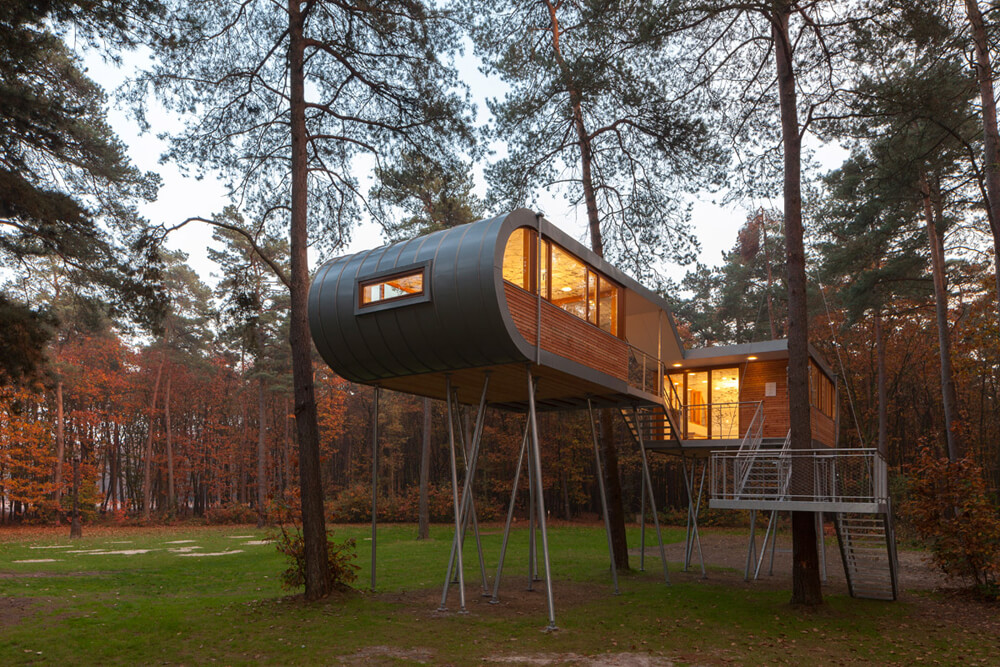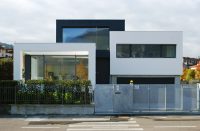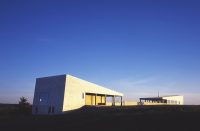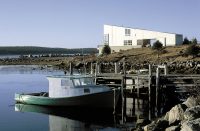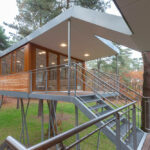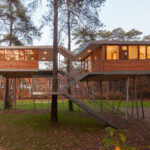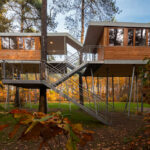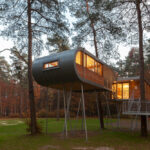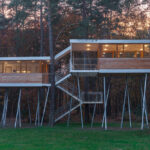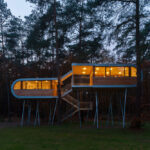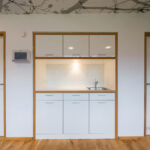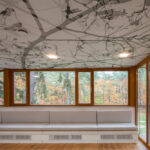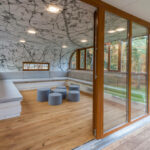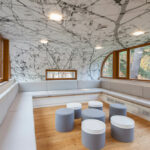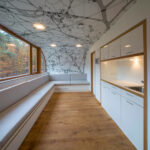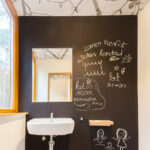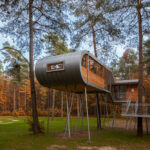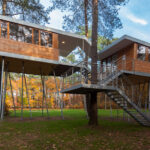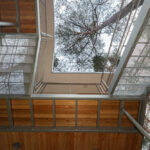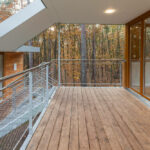Architect(s): Baumraum
Address: 3941 Hechtel-Eksel, HECHTEL-EKSEL, Belgium
Latitude/Longitude: 51.163843910082825,5.310190204975424
Photographs: Markus Bollen
Sappi, The Flemish Forest and Nature Agency, the commune of Hechtel-Eksel and Proximity joined forces in a unique partnership to stimulate companies, politicians and organisations to embrace sustainability in their daily activities. What better way to do this than to build a treehouse? According to the international paper producer Sappi, which started the project with Proximity BBDO, their communications agency, a treehouse would make their sustainability efforts more tangible, more real, and a true source of inspiration for others to follow.
The Flemish Forest and Nature Agency and the commune of Hechtel-Eksel, were quickly sold on the idea to create this project on their premises and enthusiastically embraced the concept.
All with one vision: environmental quality and social responsibility for the benefit of people, planet and prosperity.THE TREEHOUSE helps to bridge the gap between economy and ecology.
THE TREEHOUSE isn’t just any treehouse. It’s a small architectural wonder equipped with state-of-the-art eco facilities located in the forests of Hechtel-Eksel.
THE TREEHOUSE is the ideal place to hold break-out sessions where businesses can brainstorm about the importance sustainability to their company and ways they can improve to build a better future for the planet. It is the perfect location for scientific research and relevant presentations.
How is THE TREEHOUSE designed? The major image of the design is a sheet of paper that is pleated and encloses both interior and exterior spaces. THE TREEHOUSE is based on five elements: two cabins on different levels, connecting terraces, a staircase and a connecting roof.
The cabins
In the lower cabin is a coffee lounge, pantry, restroom and technology room. The upper room is dedicated to meetings and other events that are appropriate to this exquisite space among the trees. Benches covered with soft pillows surround the space resulting in a comfortable and laid-back feeling, encouraging one to stay longer.
Construction
The cabins and upper terraces rest on 19 angled steel stilts. Each steel stilt is connected to the ground below with foundation screws that have a minimal impact on the forest floor.
Heating and ligthing
All equipments use the existing supplies (green electricity and water purification) of the nearby museum or are self sufficiently (heat pump). The newest techniques are used for the heating and cooling system. A heat pump unit which is situated in an underground space, extracts heat from the air. The warmth is transported through tubes which are led through one of the steel columns into the cabins. After converting the warmth to a fluid, tubes will transport it to the heating-units under the benches. The result of this low temperature heating system is a nice, comfortable climate and the energy cost remains very low. In summertime the system can be used for cooling as well. This system is CO2 neutral. The balanced ventilation system is totally demand-based with supply and abstract units integrated in the benches. The ventilation and heating systems are continuously monitored. To minimize the energy consumption, all lights are LED. In the toilet, daylight and movement sensors are integrated in the LED armatures.
Text description provided by the architects.
Client: This unique project is founded by the partnership of Sappi, The Flemish Forest and Nature Agency, the commune of Hechtel-Eksel and Proximity BBDO.
Contributed by Baumraum

